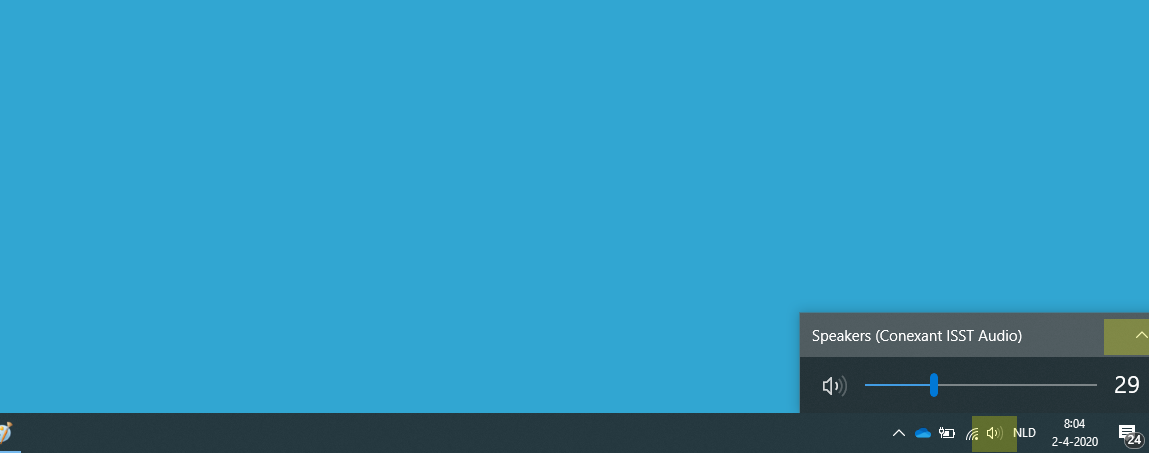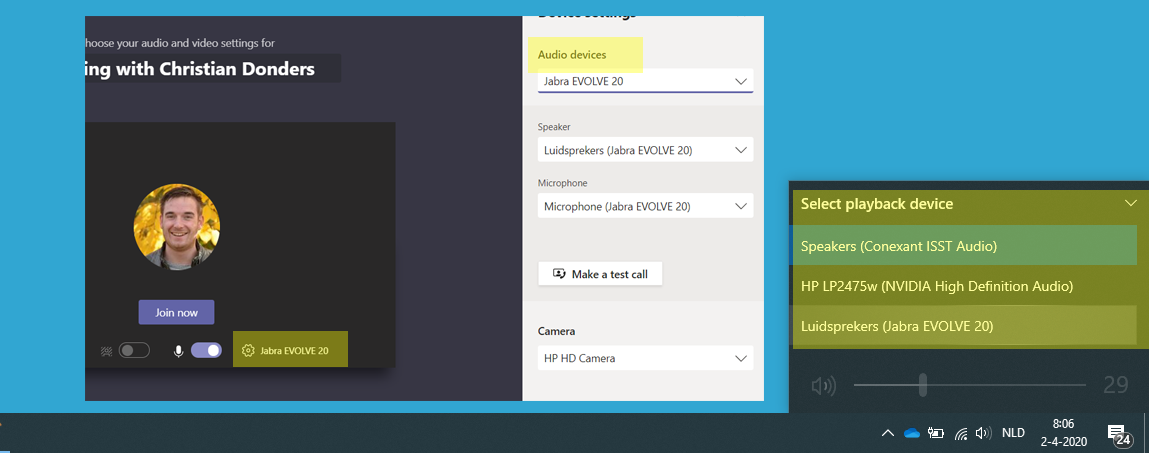What if you want to give lectures and teach from home? The easiest way to do this is to use the video conferencing feature in the app Microsoft Teams. You can use this feature to teach classes, but also to coach smaller groups of students, and to speak to students one on one.
Your digital learning environment can still be used to provide students with sources, assignments, and to give feedback.
Students need to have the MS Teams app installed on their own device to take part in the online conferences (lectures). The correct download links per type of device are in this document: Installatie-instructie MS Teams (pdf) (Dutch, but with pictogram clarifications).
Please note: You do not need to create a new Teams if you want to have a conference call with a group of students. You can use a video stream that will only be used for one sessions. For this, Microsoft Teams automatically creates a link that can be shared via email or other media. Through this link, participants will be able to join the video conference.
However, if you already have an existing MS Teams with a group of students, you can use that, too. In each Team site, a video conference feature is included. The only drawback of this, is that only members from that particular team will be able to join the conference call.
Setting up an online lecture via MS Teams
Follow the steps below to set up an online lecture in MS Teams.
Instruction videos per step are available in the Dutch version of this post.
1. Install the desktop app on your laptop or PC
Install the desktop app Microsoft Teams on your laptop or PC. For a HU-device: go to the Software Center via Start Menu, search for MS Teams and follow the steps.
To install MS Teams on your personal device, simply go to teams.microsoft.com and follow the steps. If you do not see a pop-up window appear because you are already logged in, click on the most bottom-left button, that says ‘install desktop app’.
2. Plan a video conference
Open the MS Teams desktop app and plan a video conference. You can do this via ‘calendar’. Simply add a new conference item, fill in the title, and select time and date. If you want to co-teach with a colleague, you can add them to the required participants.
Please be sure to add yourself to the required participants, to generate a link that you can later share with your students. MS Teams won’t “find” your name in the library, but if you click anywhere else, you will appear in the participant box.
3. Sharing your screen
Are you planning on sharing your screen during the video conference, for example to show a PowerPoint presentation? You don’t need to prepare anything to do this, other than making sure your PowerPoint is open in the background.
4. Share the link with your students
If you create an appointment in MS Teams’ calendar, it will automatically generate a link for you. Once you have closed the appointment, simply reopen it again and the link will appear. You can copy this link by selecting it, using right-click, and clicking on ‘copy link’. You can share this link with your students beforehand. You can do this via:
- Canvas on the course page. For example through an announcement or a calendar item.
- Via email
- If you don’t use Canvas yet, you can also use the learning environment that is still active within your institute.
5. Start the lecture
When you start the conference call, students can join via the link that you shared with them. As a teacher, you can also access the video conference through the link. You can find the link in your Outlook Calendar or via Microsoft Teams.
6. What if it takes longer?
In case you need more time than the scheduled time in your calendar, not to worry. You can simply continue the meeting; it will not be ended until you do. Please keep in mind that the link will only work before and during the conference call. Once the call has ended, students can no long access your lecture.
Things to keep in mind:
- Teach a mock lecture: Before teaching your first online class, it would be recommended to have a mock lecture with several colleagues, just to practise how everything works.
- Use the app: Video streaming only works through the MS Teams desktop app. You cannot use the browser for this purpose.
- Discuss your approach with your institute: To avoid confused students, it would be recommended to discuss your approach to teaching online with colleagues. Things to consider are how you are going to teach online, and how/where you are going to share links, for example.
- Access to Canvas: All students and teachers have access to Canvas via canvas.hu.nl. They can log in with their HU-account. If you do not have access, please visit askict.hu.nl.
- Don’t use Skype for Business: This tool does not have the capacity for multiple lectures at once. Apart from that, students do not have access to Skype for Business. You can use Skype for one on one conversations with colleagues, although for this MS Teams would be recommended, too.
- Access to MS-Teams: Access to MS Teams is currently only for people with an HU-account. If you wish to invite a guest speaker, you can do so by adding them to the required participants list, as described in step 2.
- Maximum number of participants is 250: No more than 250 people can be in the same conference call. We are still looking for solutions for groups larger than 250.
- Access with link: Anyone who has access to the link can join your conference call. Please be aware of this.
- Personal data: Be careful with sharing (sensitive) personal data, just like you would during a normal lecture.
- Check your sound setting: before starting the lecture/meeting. By checking the settings you avoid people won’t hear you by entering the meeting or that you can’t hear them


- Internet connection and speed: Please be aware of the fact that streaming video scan be quite taxing on your (WiFi) network. If people on the same network are streaming videos (watching Netflix, for instance) this may slow down your internet connection and interrupt your conference call. You can test your internet speed through this link: https://openspeedtest.com/. If your upload speed is higher than 12 Mb/s, a video stream should be possible. If your internet connection is too slow, you can also choose to not use video at all, in order to lower the amount of data that needs to be uploaded.
